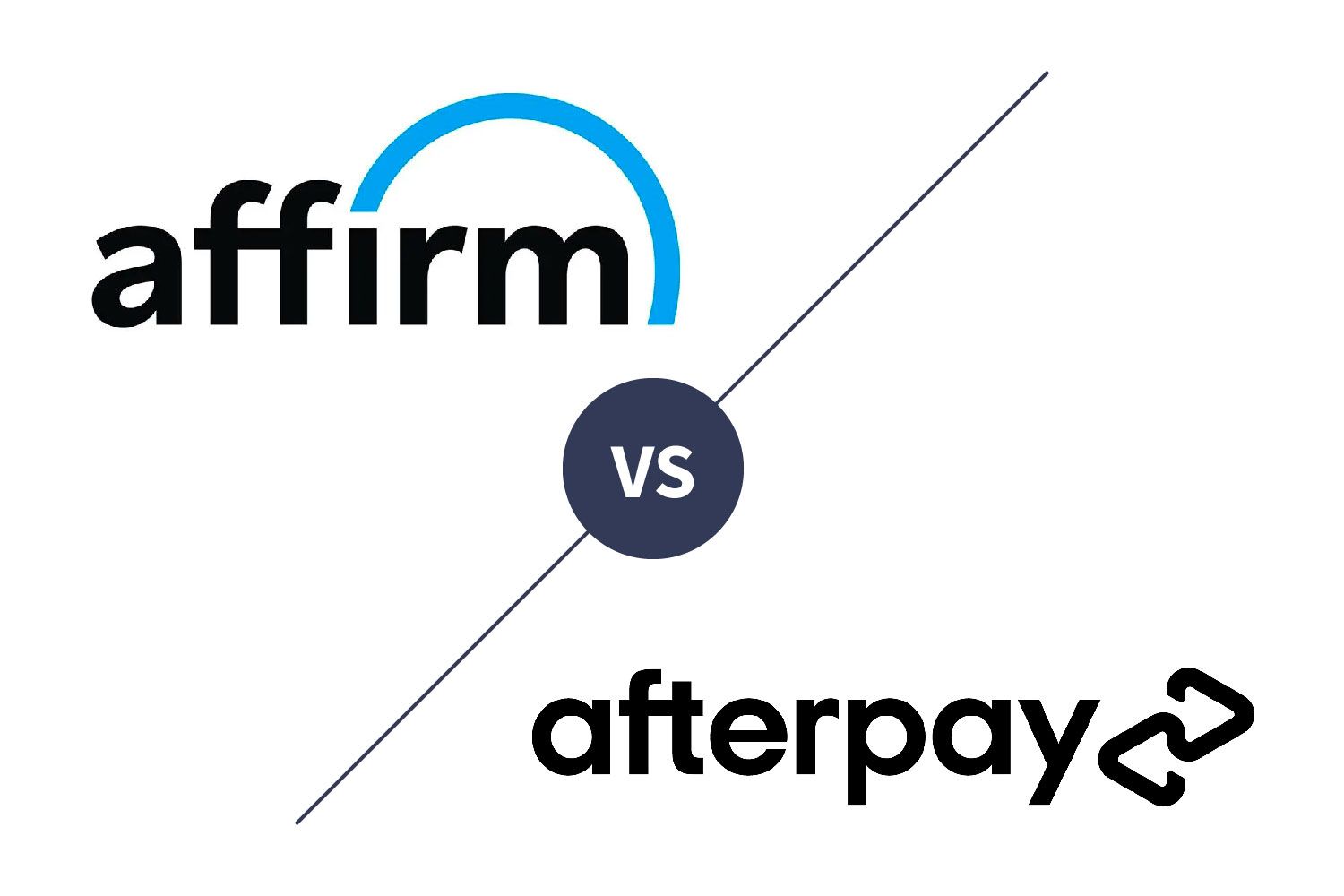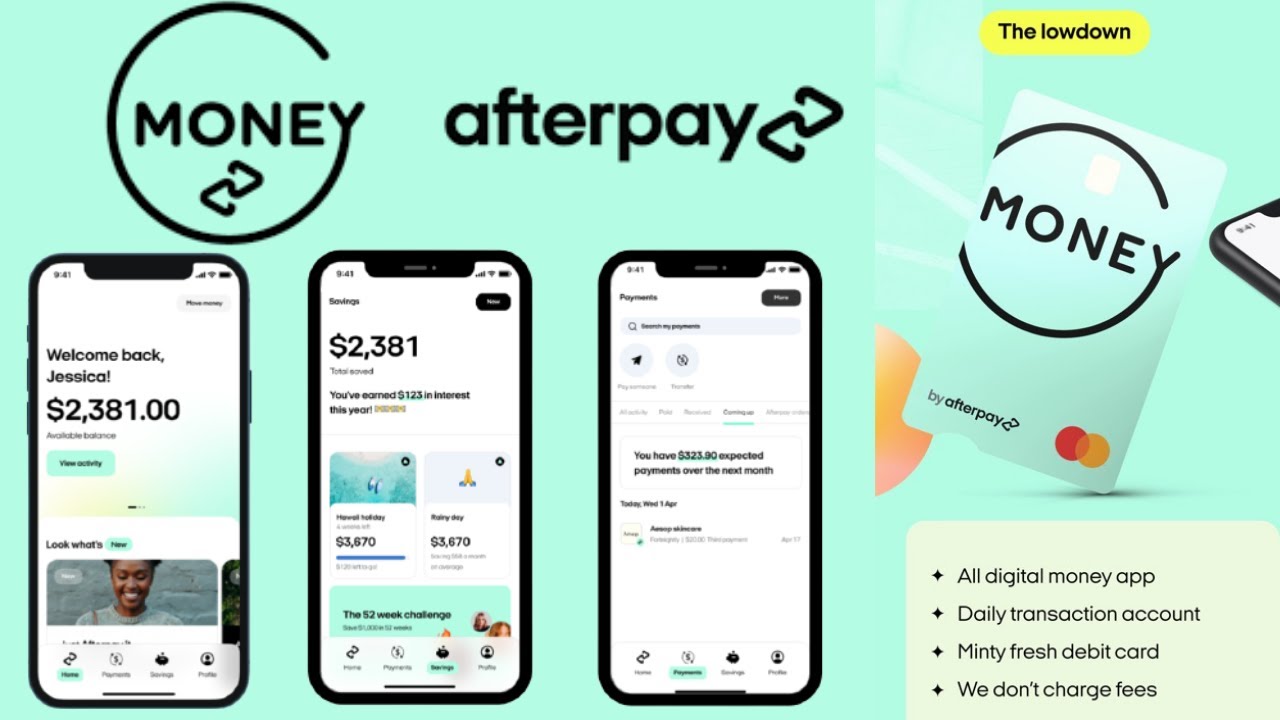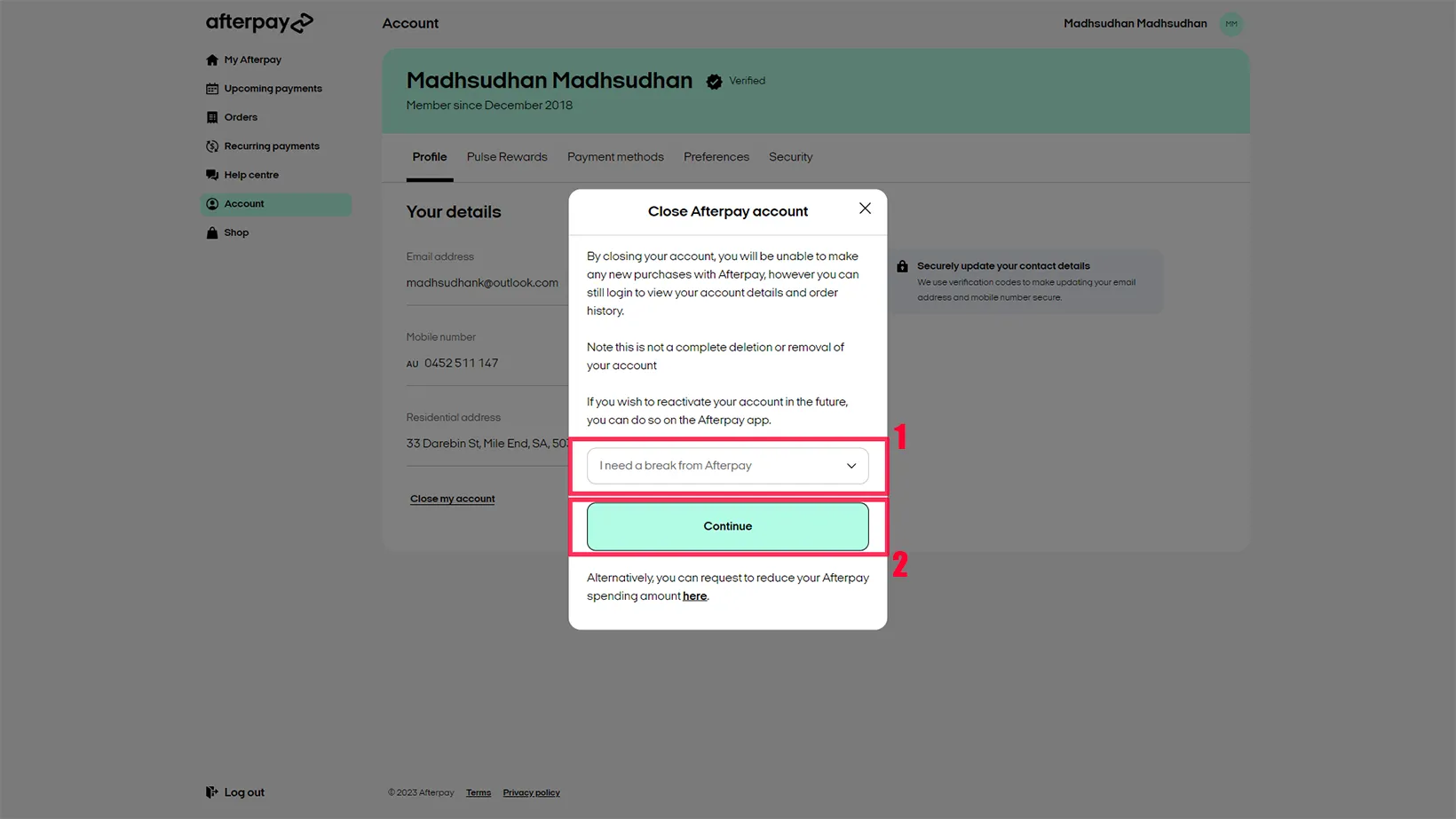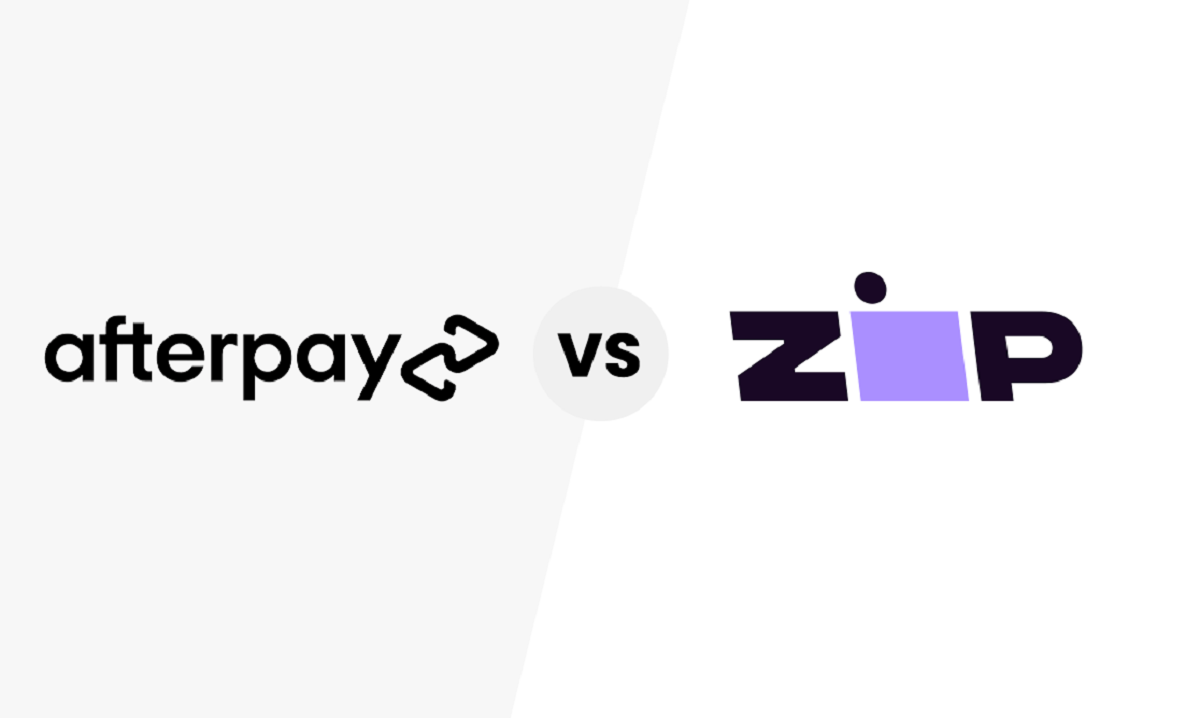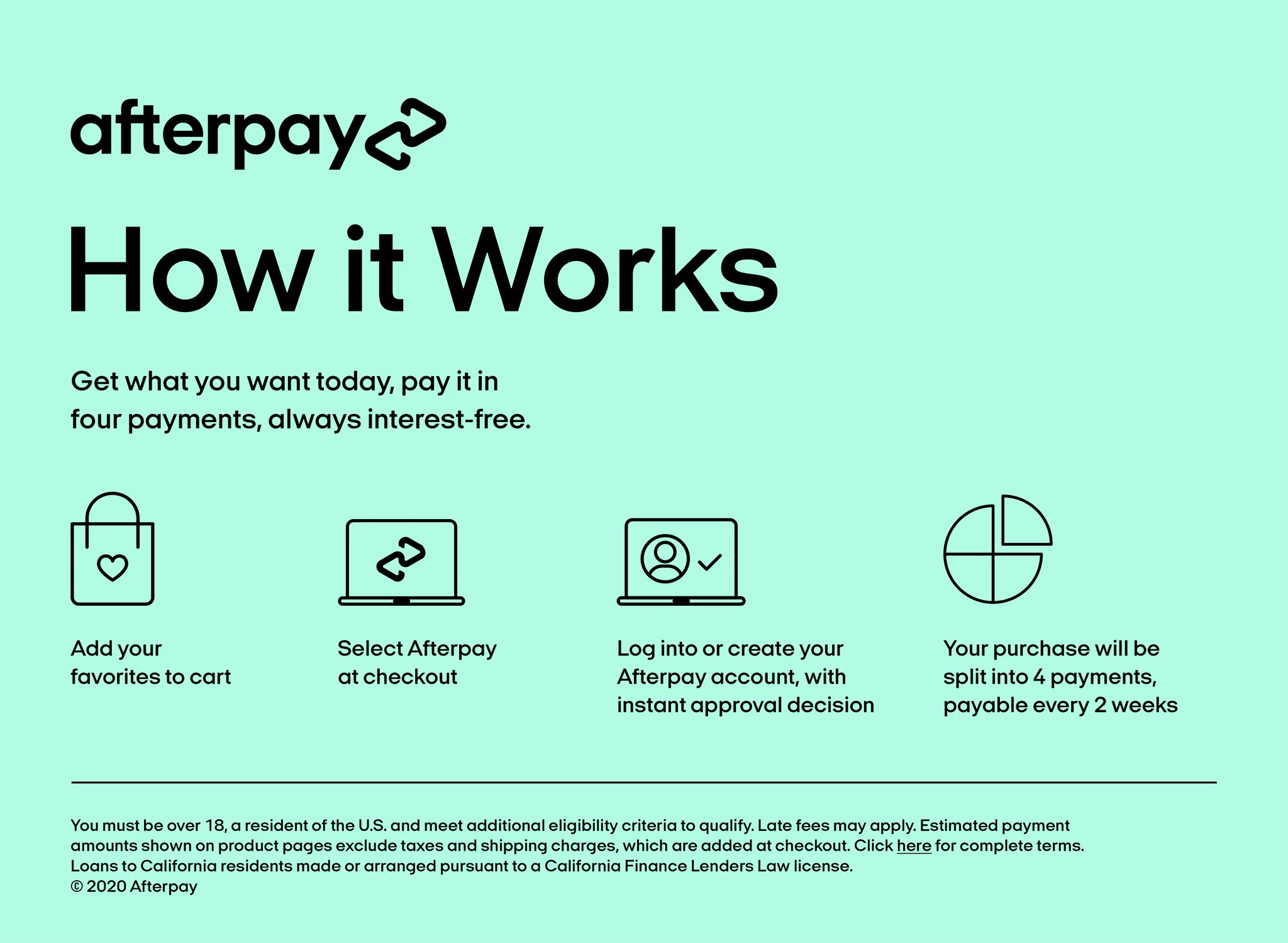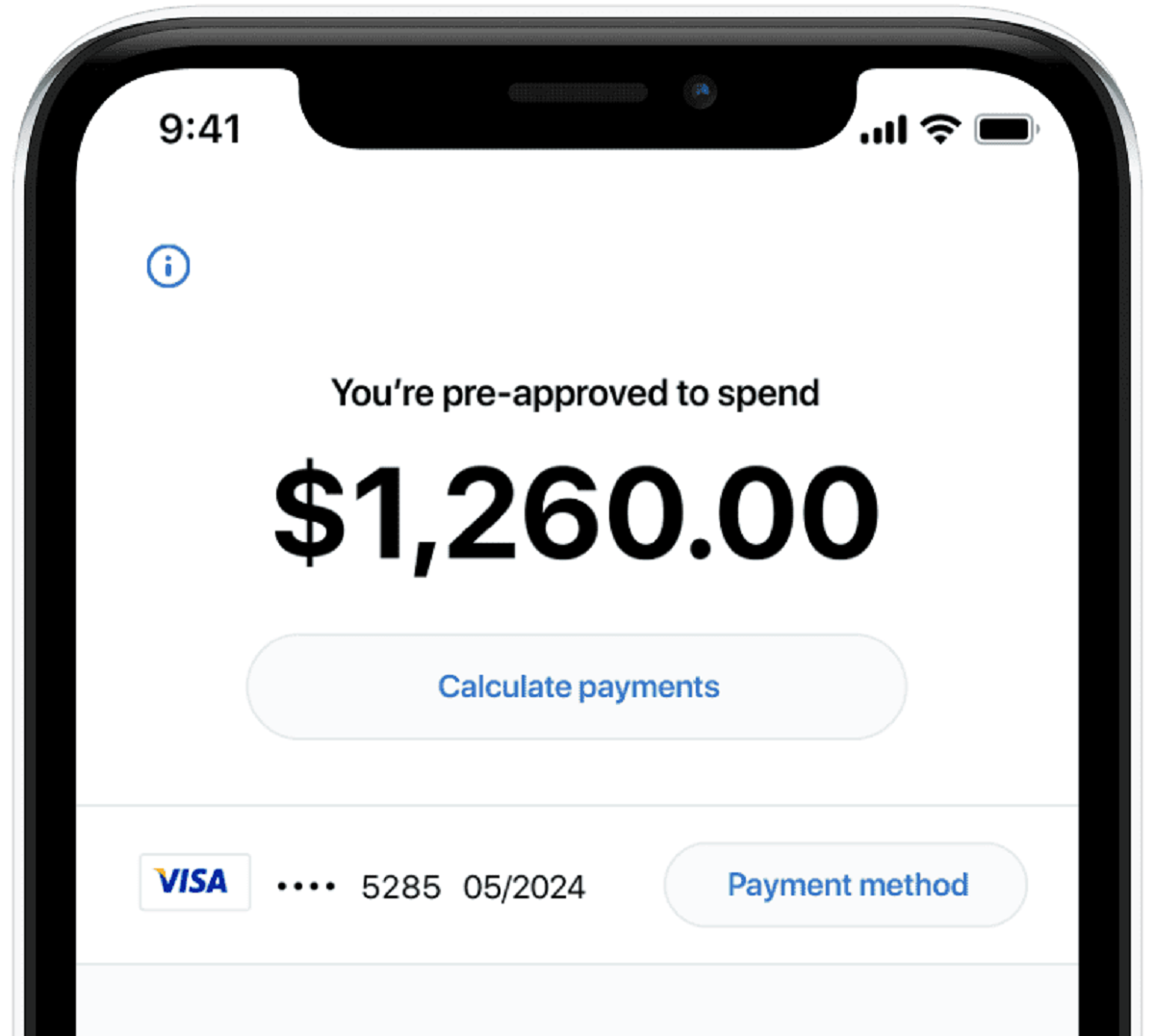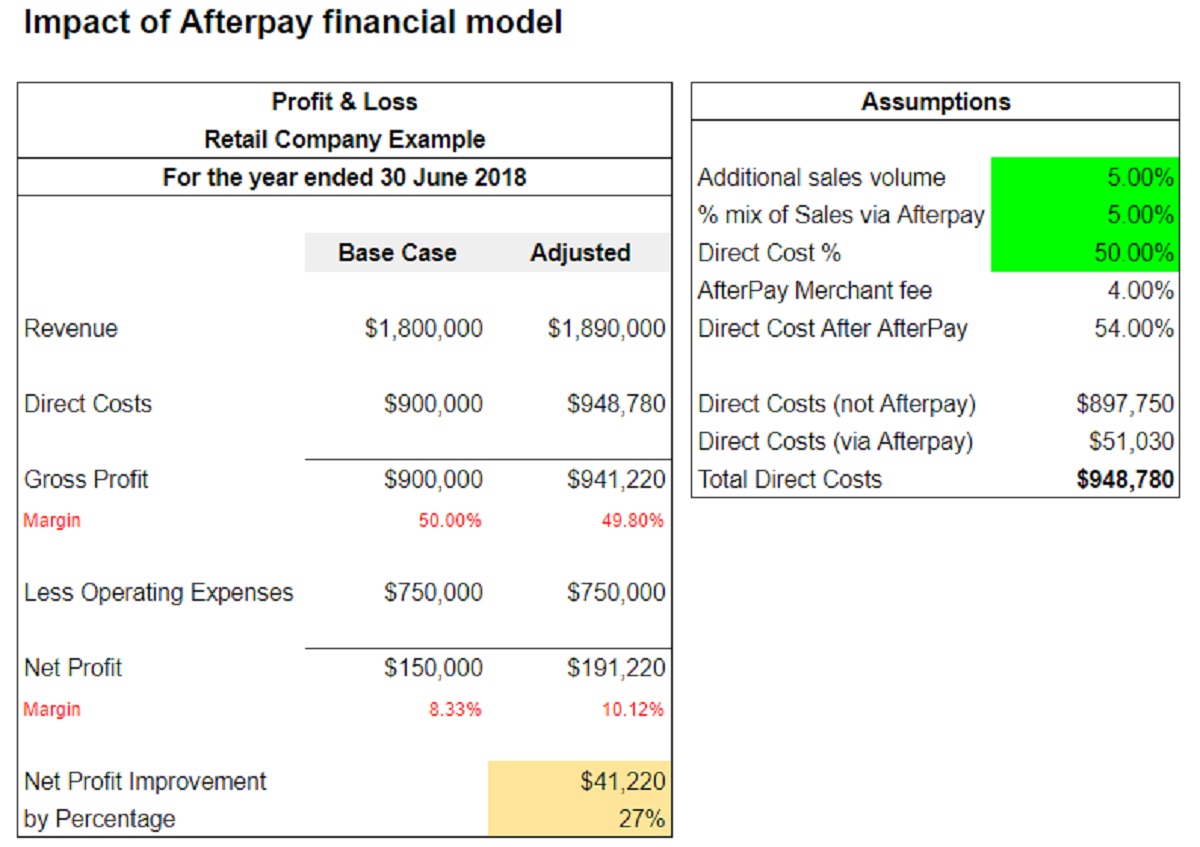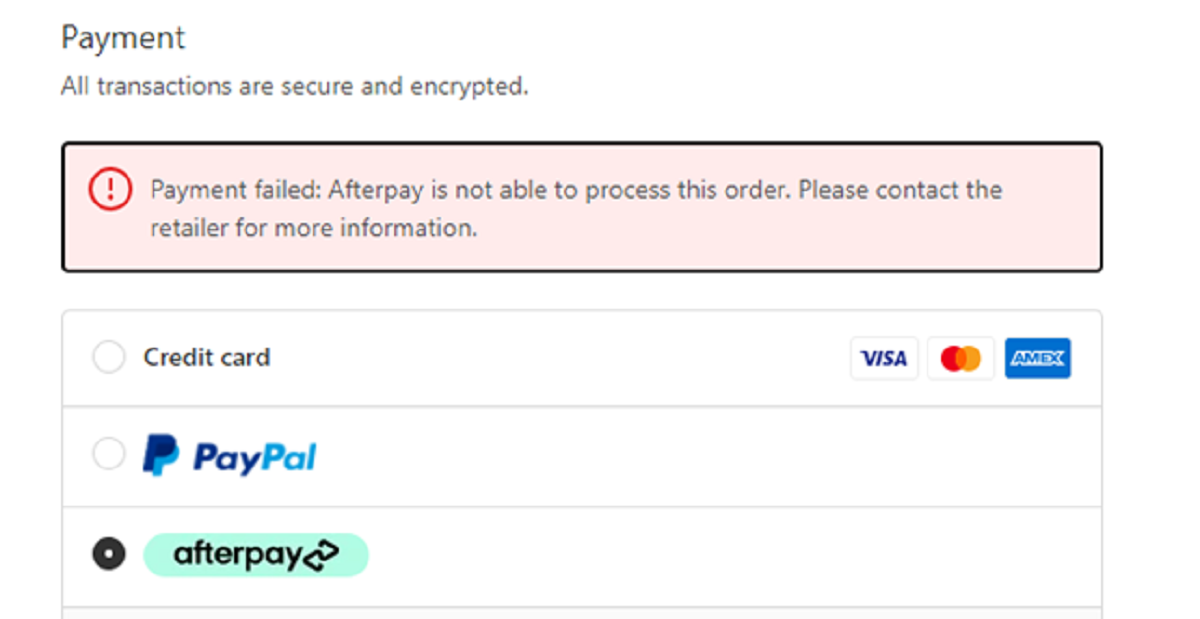Introduction
As an online merchant, offering flexible payment options is crucial to attracting and retaining customers. Afterpay, a leading “buy now, pay later” service, has gained popularity among consumers for its convenience and affordability. But how does Afterpay work for merchants?
In this article, we will explore the benefits and process of integrating Afterpay into your e-commerce platform to provide a seamless payment experience for your customers.
Afterpay allows shoppers to make purchases immediately and pay for them in four interest-free installments. This payment method appeals to a wide demographic, particularly Millennials and Gen Z, who appreciate the flexibility and budget-friendly nature of this service. By accepting Afterpay, you can tap into a larger customer base and increase sales.
In the following sections, we will delve into the specifics of how Afterpay functions for merchants, from setting up an account to managing orders and analyzing data for optimization. Whether you have an established e-commerce business or are starting a new venture, integrating Afterpay can provide numerous benefits, such as higher conversion rates, increased average order value, and reduced cart abandonment.
So, let’s dive into the world of Afterpay and discover how this payment solution can empower your e-commerce business and enhance the shopping experience for your customers.
How Afterpay Works for Merchants
Afterpay works by allowing your customers to pay for their purchases in four equal installments. As a merchant, integrating Afterpay into your e-commerce platform opens up a range of benefits and opportunities to increase sales.
When a customer chooses to pay with Afterpay, they are required to create an Afterpay account or log in to their existing account. After completing the purchase, the customer will make their first installment payment at the time of checkout. The remaining three payments will be automatically deducted from their chosen payment method every two weeks.
As a merchant, the full order amount is deposited into your account by Afterpay, minus their merchant fees. This means you receive the funds upfront, without having to wait for the installments to be paid off.
By offering Afterpay as a payment option, you can attract more customers and increase your conversions. The transparency and flexibility of Afterpay make it an appealing choice for shoppers who want to spread their payments over time.
Furthermore, accepting Afterpay can lead to an increase in average order value. Customers are often more willing to make larger purchases when they can spread the cost over four installments, compared to paying the entire amount upfront.
Afterpay also provides merchants with protection against fraud and chargebacks. They assume full responsibility for any uncollected payments or fraudulent activity, giving you peace of mind and reducing the risk associated with online payments.
In terms of customer experience, Afterpay provides a seamless and user-friendly interface. Customers can easily select Afterpay as their payment option, view their installment schedule, and manage their payments through the Afterpay app or website.
With the basics of how Afterpay works for merchants covered, let’s move on to the steps involved in setting up an Afterpay account for your e-commerce business.
Setting Up an Afterpay Account
Before you can start accepting Afterpay as a payment method, you will need to set up an Afterpay account specifically for merchants. Here’s a step-by-step guide to help you through the process:
- Visit the Afterpay website and navigate to the “Merchant” section.
- Click on the “Get Started” or “Sign Up” button to begin the registration process.
- Fill out the required information, including your business details, contact information, and website URL.
- Agree to the terms and conditions and click “Submit” to complete the initial application.
- After submitting the application, the Afterpay team will review your information and determine your eligibility as a merchant.
- Once approved, you will receive further instructions on how to proceed with the integration process.
During the application process, be prepared to provide information about your business, such as your tax ID, average order value, and monthly sales volume. Afterpay will assess this information to ensure a smooth onboarding process.
Once your Afterpay account is set up, you will be provided with access to necessary developer resources and integration documentation to connect Afterpay with your e-commerce platform.
It’s important to note that Afterpay has specific requirements and guidelines for merchants to ensure a seamless integration and user experience. Familiarize yourself with these guidelines to ensure compliance and maximize the benefits of using Afterpay.
In the next section, we will explore the steps involved in integrating Afterpay with your e-commerce platform.
Integrating Afterpay with Your E-commerce Platform
Integrating Afterpay with your e-commerce platform is a straightforward process that can be done with the help of developer resources and documentation provided by Afterpay. Here are the steps to integrate Afterpay into your online store:
- Choose your integration method: Afterpay offers different integration methods depending on your e-commerce platform. This may include plugins, APIs, or pre-built integrations.
- Access developer resources: Afterpay provides developer documentation, APIs, and SDKs to facilitate the integration process. Take advantage of these resources to understand the technical requirements and steps involved in integrating Afterpay.
- Implement the integration: Follow the provided documentation and guidelines to integrate Afterpay into your e-commerce platform. This typically involves adding code snippets or using plugins specific to your platform. If you have a developer, they can assist you with this process.
- Test the integration: After implementing the integration, thoroughly test the functionality of Afterpay on your website. This will ensure a smooth experience for your customers and identify any potential issues that need to be addressed.
- Go live: Once you are satisfied with the integration and have successfully tested it, you can make Afterpay payment options available to your customers on your website. This will enable them to select Afterpay as a payment method during checkout.
After the integration is complete, make sure to thoroughly review the customer experience on your website. Ensure that the Afterpay payment option is clearly displayed, and the checkout process is seamless and intuitive. Providing a user-friendly experience will enhance customer satisfaction and encourage them to complete their purchases.
In the next section, we will discuss how to display Afterpay payment options prominently on your e-commerce website.
Displaying Afterpay Payment Options
Once you have successfully integrated Afterpay into your e-commerce platform, it’s important to display the payment options prominently to ensure that customers are aware of this flexible payment method. Here are some ways to effectively showcase Afterpay on your website:
- Add Afterpay badges or logos: Place Afterpay logos or badges on your website, particularly near the product listings, shopping cart, and checkout page. This visual representation will catch the attention of customers, indicating that Afterpay is available as a payment option.
- Include Afterpay information on product pages: Provide clear information about Afterpay on individual product pages, including details on how customers can use Afterpay to split their payments. This will give customers confidence that they have the flexibility to purchase the product and pay over time.
- Highlight Afterpay during checkout: Make sure that the Afterpay payment option is clearly displayed during the checkout process. This can include a dedicated button or checkbox that customers can select to choose Afterpay as their payment method. The transparency at this stage will reinforce the convenience of Afterpay to customers.
- Optimize mobile experience: With the increasing popularity of mobile shopping, ensure that the Afterpay payment option is prominently displayed and easily accessible on mobile devices. This will enhance the user experience and make it convenient for customers to complete their purchases using Afterpay.
- Utilize banners or pop-ups: Consider displaying banners or pop-ups on your website that promote Afterpay and its benefits. These eye-catching elements can grab visitors’ attention and entice them to learn more about Afterpay as a payment option.
By implementing these strategies, you can effectively showcase Afterpay as a payment option, educate customers about its benefits, and encourage them to make purchases with this flexible payment method.
In the next section, we will delve into the customer experience with Afterpay and how it enhances their shopping journey.
Customer Experience with Afterpay
One of the key factors in the success of Afterpay is its commitment to providing a seamless and user-friendly experience for customers. By offering Afterpay as a payment option, you can enhance the shopping journey and improve customer satisfaction. Here are some aspects of the customer experience with Afterpay:
1. Easy payment process: Afterpay simplifies the payment process for customers. During checkout, they simply select Afterpay as their payment method and complete the purchase. There’s no need to enter lengthy credit card details or create new accounts.
2. Transparent installment plan: Afterpay provides customers with a clear overview of their installment plan. They can view the payment schedule, including the due dates and amounts of each installment, so they can plan their budget accordingly.
3. Paying over time: Afterpay allows customers to enjoy their purchases immediately while breaking payments into four equal installments. This flexibility is particularly appealing for customers who prefer not to make a large upfront payment.
4. Zero-interest payments: Afterpay offers interest-free payments, meaning customers only pay the purchase amount split into four installments. There are no hidden fees or compounding interest charges.
5. User-friendly app and website: Afterpay provides customers with a dedicated app and website where they can manage their Afterpay payments, view their orders, update payment information, and track their purchase history.
6. Increased purchasing power: By providing the option to pay over time, Afterpay helps customers stretch their budgets and make larger purchases, potentially leading to increased average order value for merchants.
7. Instant approval: Afterpay provides instant approval for customers, allowing them to make purchases without the need for credit checks or lengthy approval processes.
By prioritizing a positive customer experience, merchants can build trust and loyalty among their customers. Incorporating Afterpay as a payment option helps facilitate seamless transactions and empowers customers to shop with confidence.
In the next section, we will discuss the fees and charges associated with using Afterpay as a merchant.
Afterpay Merchant Fees and Charges
When using Afterpay as a payment method for your e-commerce business, it’s important to understand the fees and charges associated with the service. While the specific fees may vary based on your location and partnership agreement, here are some common elements to consider:
1. Merchant fees: Afterpay charges merchants a transaction fee for every successful sale made through their platform. This fee is typically a percentage of the transaction value. The exact percentage may vary, so it’s important to review the fee structure provided by Afterpay.
2. Late payment fees: Afterpay imposes late payment fees on customers who fail to make their installment payments on time. However, these fees are solely the responsibility of the customer and do not affect the merchant. Afterpay handles all the collections and assumes any risk associated with payment delinquency or non-payment.
3. Chargeback fees: In the event of customer disputes or chargebacks, Afterpay may charge a fee to cover the associated administrative costs. This fee is deducted from the merchant’s account and is typically in line with industry standards for chargeback fees.
It’s important to factor in these fees when determining your pricing strategy and profit margins. While there are costs associated with using Afterpay as a payment method, the benefits of increased sales and customer satisfaction often outweigh these fees.
Additionally, the increased conversion rates and larger average order values associated with offering Afterpay can help offset the fees and contribute to the overall success of your e-commerce business.
In the next section, we will explore how merchants can effectively manage Afterpay orders and streamline their business processes.
Managing Afterpay Orders
Once customers start using Afterpay to make purchases on your e-commerce platform, it’s important to efficiently manage these orders to ensure a smooth transaction process. Here are some key considerations for managing Afterpay orders:
1. Order fulfillment: Treat Afterpay orders like any other order on your platform. Ensure that you have a streamlined process in place to fulfill customer orders promptly and accurately. Afterpay customers expect the same level of service as any other customer, so maintaining a high standard of order fulfillment is essential.
2. Order cancellations and refunds: Handle order cancellations and refunds for Afterpay orders like you would for any other payment method. If a customer requests a cancellation or refund, it’s important to follow your standard procedures and initiate the appropriate refund through your e-commerce platform.
3. Customer queries and support: Be prepared to assist customers who may have questions or issues related to their Afterpay orders. Provide clear and responsive communication channels to address any concerns and provide timely support. This will help build trust and foster positive customer relationships.
4. Afterpay customer service: Afterpay has its own dedicated customer service team to assist customers with inquiries related to their Afterpay accounts and payments. Provide customers with information on how to contact Afterpay’s customer service directly for any Afterpay-specific concerns.
5. Order tracking and status updates: Ensure that Afterpay customers can easily track their orders and receive updates on the status of their purchases. Integrate Afterpay with your order management system or e-commerce platform to provide customers with real-time information about their Afterpay orders.
By effectively managing Afterpay orders, you can provide excellent customer service and ensure a seamless experience for your customers throughout the payment and fulfillment process.
In the next section, we will explore the reporting and analytics features that Afterpay offers to merchants.
Afterpay Reporting and Analytics
Afterpay provides merchants with a range of reporting and analytics features to help track and analyze the performance of their Afterpay transactions. These tools allow you to gain valuable insights into customer behaviors, conversion rates, and overall sales performance. Here are some key aspects of Afterpay’s reporting and analytics:
1. Transaction data: Afterpay provides detailed transaction data for your Afterpay orders, including order value, installment amounts, and payment status. You can access this data through your Afterpay merchant account or through integrations with your e-commerce platform or reporting tools.
2. Conversion tracking: Afterpay offers conversion tracking capabilities to help you measure the effectiveness of Afterpay as a payment option. You can track the number of customers who abandoned their carts but completed the purchase using Afterpay, allowing you to assess the impact of Afterpay on your conversion rates.
3. Customer insights: Afterpay’s reporting tools provide visibility into customer behavior and demographics. You can analyze customer profiles, purchase patterns, and trends to better understand your Afterpay customer base and tailor your marketing strategies accordingly.
4. Performance analytics: Assess the overall performance of Afterpay on your e-commerce platform using key performance indicators (KPIs) such as average order value, repeat purchases, and customer lifetime value. These insights can help you optimize your Afterpay offerings and marketing efforts to drive greater sales and customer engagement.
5. Custom reporting: Afterpay allows you to create custom reports based on your specific business needs and goals. You can generate reports that focus on specific metrics or periods, providing you with the flexibility to track the metrics that are most important to your business.
By leveraging Afterpay’s reporting and analytics features, you can gain a deeper understanding of how Afterpay is impacting your business and make data-driven decisions to drive growth and optimize your e-commerce strategy.
In the next section, we will discuss the benefits of using Afterpay for merchants and how it can impact your business.
Benefits of Using Afterpay for Merchants
Integrating Afterpay into your e-commerce platform can bring a host of benefits for merchants. Let’s explore some of the key advantages that Afterpay offers:
1. Increased conversions: Afterpay’s “buy now, pay later” model attracts customers who would otherwise hesitate to make a purchase. By offering the option to pay in installments, Afterpay can significantly increase conversion rates on your website. Customers are more likely to complete their purchase when they have the flexibility to spread out their payments.
2. Higher average order value: Afterpay empowers customers to make larger purchases by breaking down the total cost into manageable installments. This can result in an increased average order value for merchants, as customers are more inclined to buy higher-priced items when they can pay over time.
3. Reduced cart abandonment: Cart abandonment is a common challenge for e-commerce businesses. However, by offering Afterpay as a payment option, you can reduce cart abandonment rates. Customers who are hesitant due to the total cost of their cart may be more likely to complete the purchase when they can pay in installments.
4. Improved customer satisfaction: Afterpay provides customers with a convenient and flexible payment option. By giving them the freedom to choose Afterpay, you enhance the overall shopping experience, leading to higher customer satisfaction and loyalty.
5. Risk mitigation: Afterpay assumes the risk associated with payment delinquency or non-payment. They handle all collections and manage chargebacks, reducing the risk for merchants. This allows you to focus on growing your business, knowing that Afterpay will handle any issues that may arise.
6. Access to new customers: Afterpay has a dedicated customer base that actively seeks out merchants who offer Afterpay as a payment option. By integrating Afterpay, you can tap into this customer network and attract new consumers to your website.
7. Data and insights: Afterpay provides reporting and analytics tools that allow you to gain valuable insights into customer behavior, conversion rates, and sales performance. These insights can help you optimize your marketing strategies, tailor your product offerings, and drive business growth.
By leveraging the benefits of Afterpay, merchants can enhance their bottom line, increase customer satisfaction, and drive overall business growth. The convenience and affordability offered by Afterpay make it a valuable addition to any e-commerce platform.
In the next section, we will address some frequently asked questions about Afterpay for merchants.
Frequently Asked Questions about Afterpay for Merchants
Here are answers to some common questions that merchants may have about Afterpay:
1. How long does it take to set up an Afterpay account?
The process of setting up an Afterpay account for merchants typically takes a few business days. After submitting your application, Afterpay’s team will review your information and determine your eligibility. Once approved, you will receive further instructions to proceed with the integration process.
2. Are there any additional integration fees to connect Afterpay to my e-commerce platform?
Afterpay does not charge any additional integration fees to connect their services to your e-commerce platform. However, it’s essential to review the terms and conditions provided by Afterpay to ensure you understand the fees associated with using their service.
3. Can I offer Afterpay to customers outside my home country?
Afterpay is available in several countries, including the United States, Australia, New Zealand, and the United Kingdom. If your business operates in multiple countries where Afterpay is available, you can offer Afterpay as a payment option to customers in those regions.
4. Can customers return Afterpay purchases?
Yes, customers can return or exchange items they purchased using Afterpay. Your normal return and exchange policies will apply. Once the return is processed, Afterpay will adjust the customer’s payment schedule accordingly and refund any payments already made.
5. Is Afterpay available for in-store purchases?
In addition to online purchases, Afterpay also supports in-store transactions. Afterpay’s in-store solution allows customers to make purchases using their Afterpay account through compatible point-of-sale systems. Contact Afterpay directly or refer to their resources for more information on integrating Afterpay for in-store transactions.
6. How are payments processed for Afterpay orders?
Afterpay automatically deducts installment payments from the customer’s chosen payment method every two weeks. As a merchant, you receive the full order amount upfront from Afterpay, minus their merchant fees. Afterpay handles any payment collection and assumes the risk associated with any non-payment or payment delinquency.
7. Can I use Afterpay alongside other payment methods on my website?
Absolutely! Afterpay can be easily integrated alongside other payment methods on your website. By offering multiple payment options, you provide your customers with a diverse range of choices, increasing their likelihood of completing a purchase.
For more specific questions or detailed information about Afterpay, it’s recommended to refer to Afterpay’s official documentation, contact their support team, or visit their merchant resources section.
Final Thoughts
Afterpay has become a popular payment method for merchants looking to enhance their e-commerce business. By integrating Afterpay into your online store, you can attract a wider customer base, increase conversions, and boost your average order value. Additionally, the convenience and flexibility offered by Afterpay contribute to an improved customer experience, leading to higher customer satisfaction and loyalty.
Setting up an Afterpay account and integrating it with your e-commerce platform is a straightforward process, and Afterpay provides merchants with valuable reporting and analytics tools to track the performance of their Afterpay transactions. This data can help you make data-driven decisions and optimize your business strategies.
While there are merchant fees associated with Afterpay, the benefits of using this payment method often outweigh the costs. Afterpay assumes the risk of non-payment and handles chargebacks, allowing you to focus on growing your business.
As with any payment solution, it’s important to fully understand Afterpay’s terms and conditions, as well as its integration requirements. Properly displaying Afterpay payment options on your website, effectively managing Afterpay orders, and providing excellent customer support contribute to a seamless shopping experience for your customers.
Incorporating Afterpay into your e-commerce business can lead to increased sales, improved customer satisfaction, and overall business growth. By offering flexible payment options like Afterpay, you cater to the diverse needs of your customers and stand out in the competitive online market.
So, take the leap and embrace Afterpay as a valuable addition to your e-commerce platform. Empower your customers, boost your sales, and create a positive shopping experience that sets your business apart from the rest.









